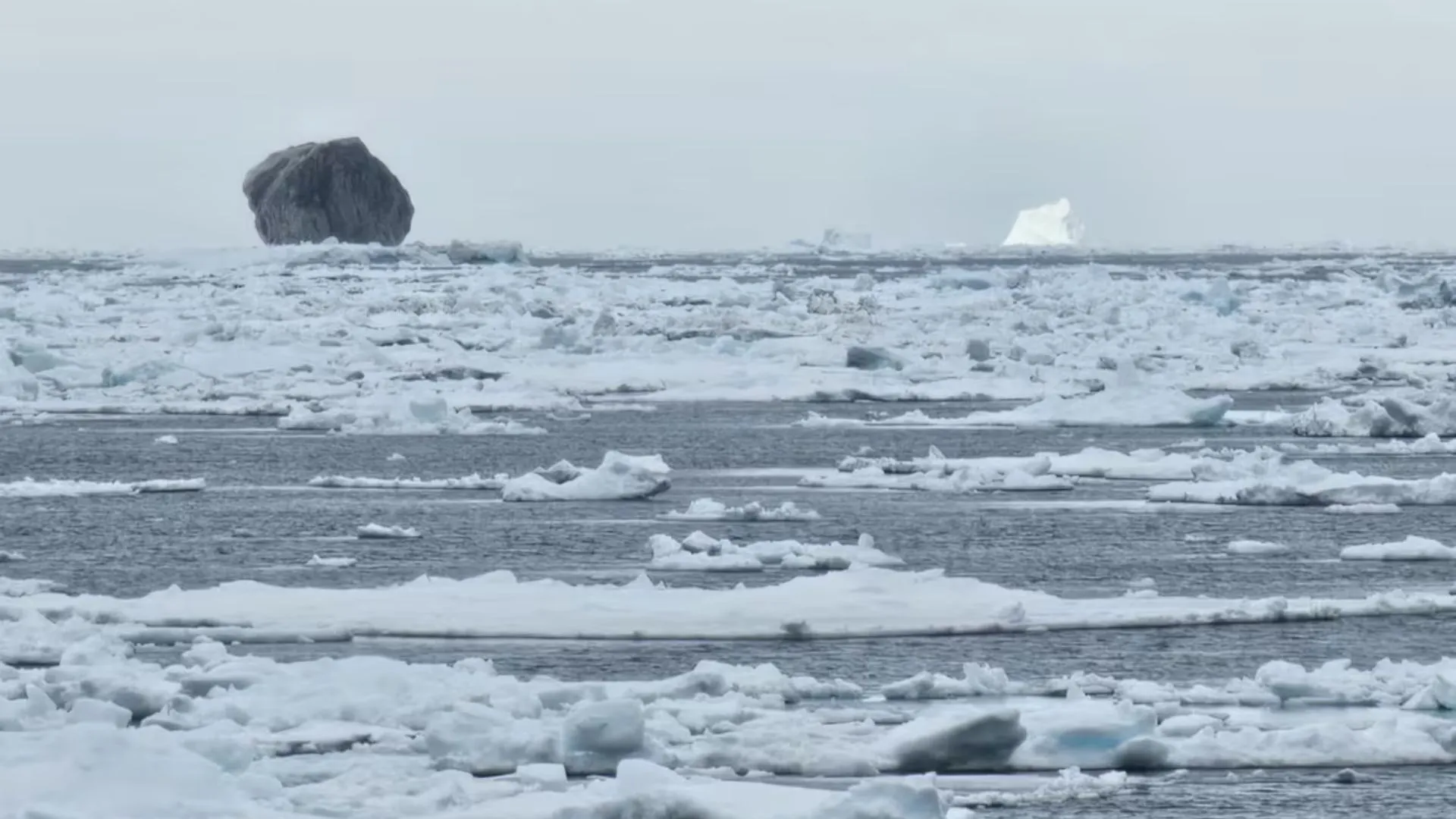A rare black iceberg was recently spotted off the coast of Labrador, Canada, sparking widespread curiosity and discussions online about its origin. The striking image was taken by Hallur Antoniussen, a shrimp fisherman, while he was out at sea near Carbonear last month. He was aboard his fishing vessel, Saputi, when the dark iceberg appeared among a sea of white ice.
A Strange Sight at Sea
Antoniussen couldn’t believe his eyes when he saw the unusual iceberg. “I have seen icebergs that are rolled, what they say have rolled in the beach with some rocks in it. This one here is completely different. It’s not only that he is all black. He is almost in a diamond shape,” he told CBC Radio. Although he couldn’t measure its exact size, the 64-year-old fisherman guessed that the iceberg was at least three times larger than a regular bungalow.
Since he doesn’t carry a camera during work, he quickly ran to his room, grabbed his phone, and took the now-viral picture.
“It’s something you don’t see very often, and a camera is not something I run around [with] when I’m working. So, I just ran to my room and took my phone and snapped this picture,” he said.
Internet Reacts to the Rare Discovery
Once the image hit social media, users reacted with amazement. Some shared their fascination, while others tried to explain the black color.
One person wrote, “I have seen lots of big icebergs but never a black one,” and another added, “This is my first time seeing a black iceberg!!”
A third user offered a theory, saying, “It’s likely a boulder resting on the surface of the ice that rolled or fell onto the glacier on land prior to the iceberg being calved at tidewater on the coast of Greenland.”
Why Is It Black?
Typically, icebergs look white because they contain small air bubbles that scatter all colors of light. When the ice becomes older and denser, these air pockets disappear, and the ice turns clear like glass.
However, some icebergs appear black or grey because of dirt, debris, or rock particles that mix into the ice. This often happens when the iceberg moves over dark terrain.
A Glaciologist Explains
According to Lev Tarasov, a glaciologist at Memorial University in Canada, the black iceberg might have once been part of a larger glacier that broke off and fell into the sea.
“Over time, as it travels around Baffin Bay and down the coast of Labrador, it’s melting away. So I think a lot of that ice is melted away. Maybe the part that’s clean is underneath, right? Again, 90 per cent of the ice is underneath the water. So we’re only seeing the tip of the iceberg on top,” said Mr Tarasov.























